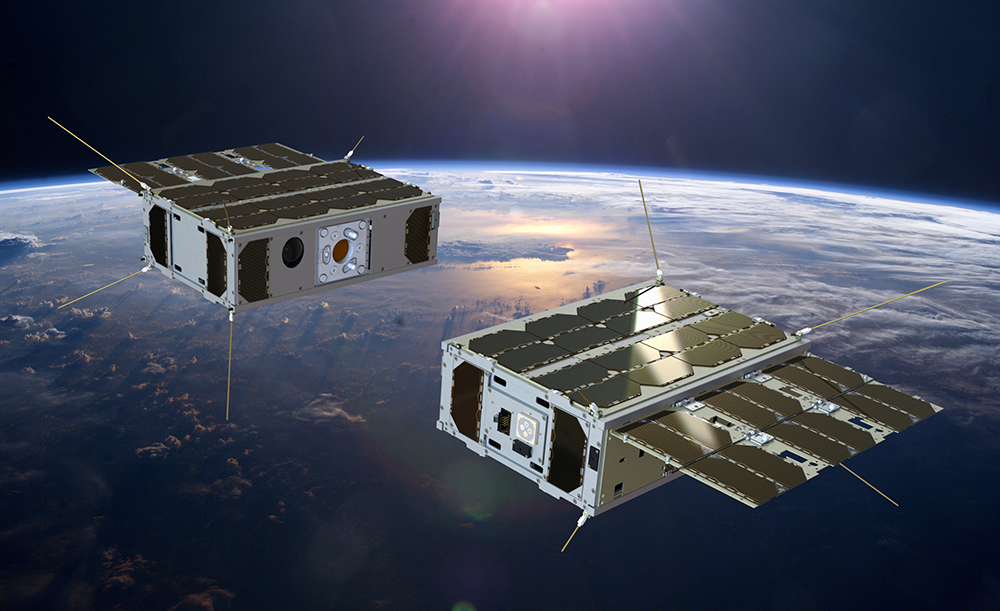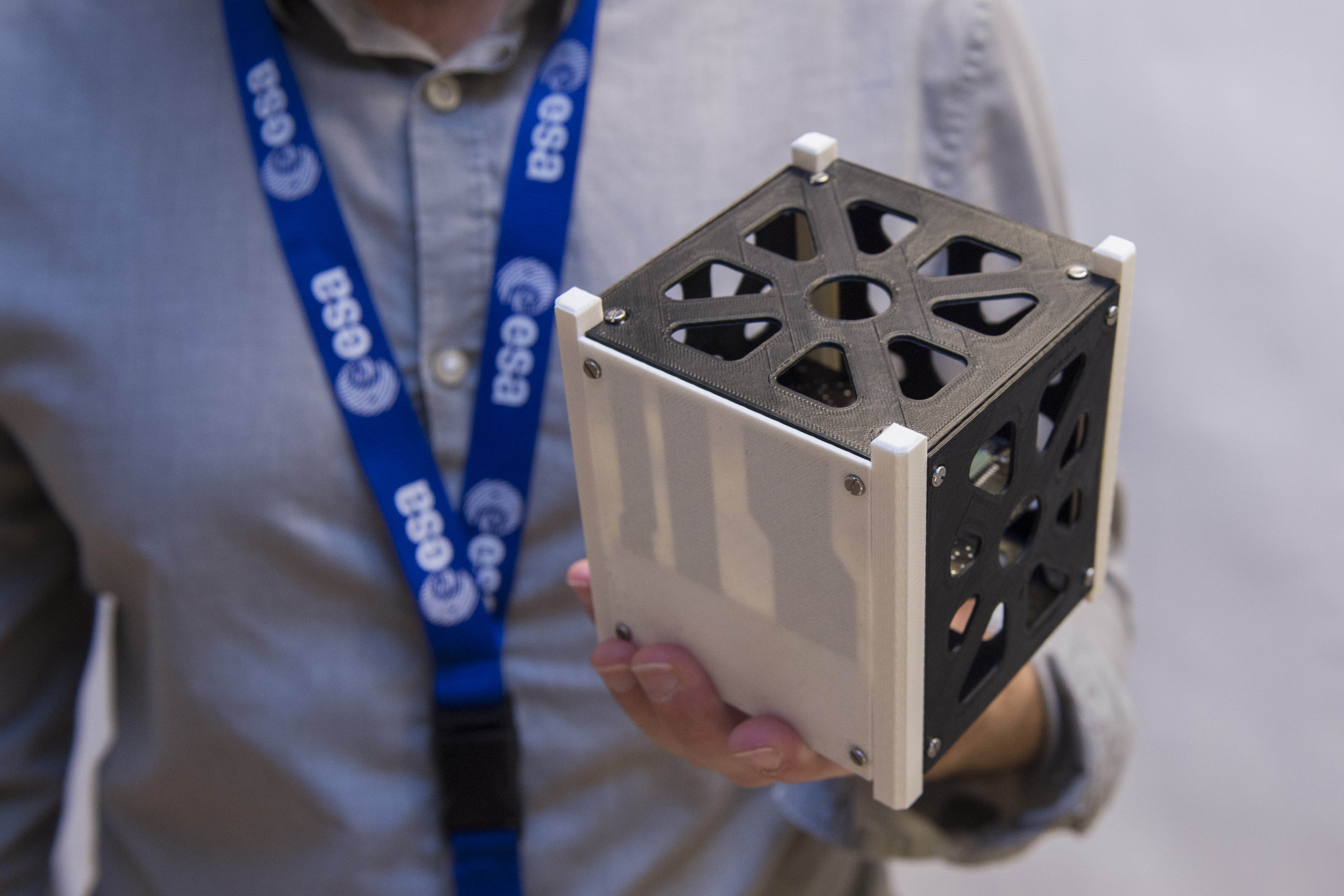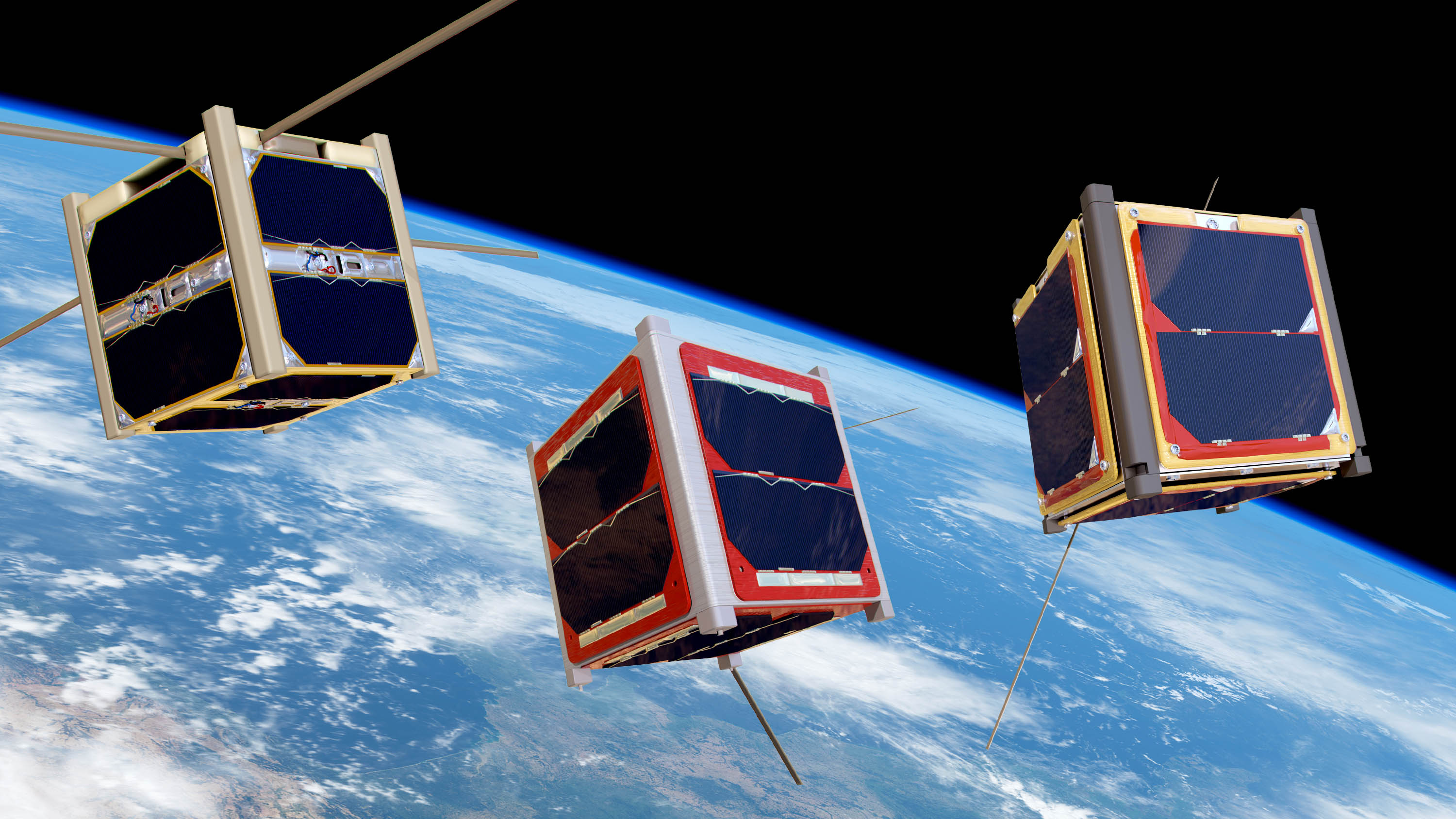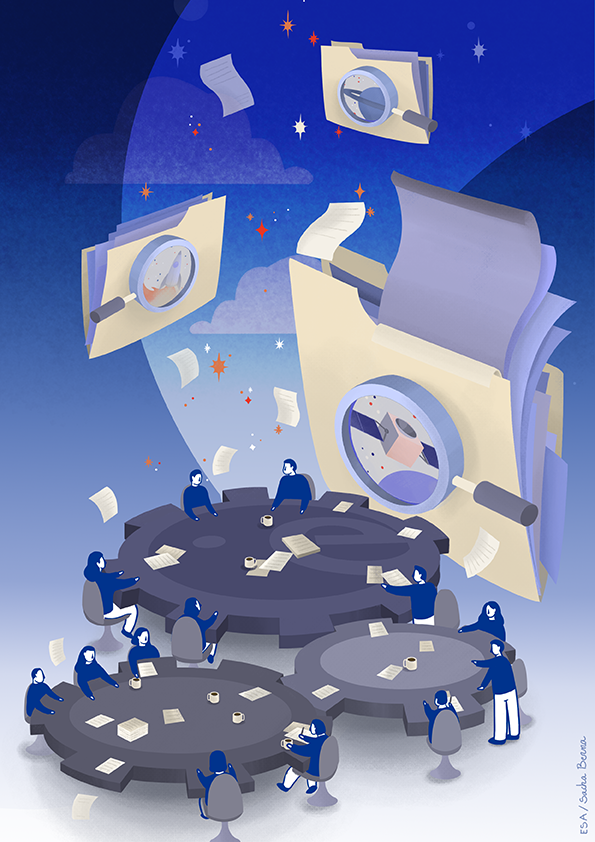Join the hive: send your ideas for CubeSat swarms
We all know the saying that there is strength in numbers. The next revolution in space technology could be the use of swarms of tiny spacecraft, called CubeSats, that work together to achieve things greater than what any lone spacecraft can. CubeSats, assemble!
A CubeSat is a miniature satellite made up of one or more standard-sized 'units'. Each unit measures just 10 cm×10 cm×10 cm and weighs less than two kilograms. They are quick and cheap to produce and can carry all sorts of instruments on board. Almost 2000 of these tiny spacecraft have already been launched into space; while these have mostly operated alone, technological developments in recent years mean that we may soon use 'swarms' of tens of CubeSats that operate autonomously.
"In the last four years we've demonstrated that CubeSats can effectively communicate with each other via inter-satellite links, and we have exciting developments in our technology programme for their movement control in all directions," explains Roger Walker, head of ESA's CubeSat Systems Unit. "When you combine this finely controlled propulsion with inter-satellite links and visual or radio-based navigation, from a hardware perspective you're able to fly swarms. All that’s left is to address the challenges in software to guide, control and safely manage the swarm as a whole."
CubeSat swarms could greatly outperform classical spacecraft systems, or even touch totally new application areas impossible to address with classical configurations. This is why ESA is asking for your innovative ideas for new mission concepts enabled by swarms of CubeSats. The open call for ideas, which is being run by the Preparation element of ESA's Basic Activities through the Open Space Innovation Platform (OSIP), welcomes ideas for both scientific and commercial applications.
Roger: "We really encourage proposals from consortia – partnerships between industry and research institutes – because in our experience this leads to concepts which are realistic from a technical point of view, while being focused on interesting applications."
There are two types of swarms you could consider. One is a distributed swarm, in which many CubeSats fly in formation, connected by inter-satellite links and using onboard data processing techniques to generate a single output that gets sent back to Earth. The alternative is an aggregated swarm, in which separate CubeSats rendezvous and dock together, potentially with a larger central hub, to form a larger modular spacecraft that can autonomously (re)assemble itself. Both types of swarms allow us to overcome the size and weight constraints of the rockets that carry them to space, and could challenge classical spacecraft design methods and operations.
"The concept of using CubeSat swarms for a wide variety of missions has never had a dedicated open call before at ESA. I'm very excited to see what comes from this call. Previous open calls have resulted in ideas which we never thought of, and we'll certainly push the boundaries of the state of the art, leading to new breakthroughs." – Roger Walker
Launching your idea
The call for ideas will be open until 17 February 2023. You can find full details and up-to-date information of the timing, process and conditions via OSIP. Selected mission concepts will be given six months and funding from ESA up to €100 000 to perform a mission/system concept study. The best concept will then be awarded a session at the Agency's Concurrent Design Facility together with ESA experts, potentially the first step towards an In-Orbit Demonstration (IOD). If your mission concept is selected, you won't have to wait long: ESA hopes to launch the first swarm IOD missions by 2026, to have the first operational mission launched by 2029.
"OSIP now has such a wide network within the European space community that it allows us to reach the maximum amount of people. Meanwhile, the online submission process on OSIP is very easy. I think there's no better mechanism within the Agency for soliciting a large number of diverse concepts," says Roger.
Just like a swarm, and in line with ESA's priorities outlined in its Agenda 2025, we are stronger when we work together. Because yes, there is strength in numbers.





